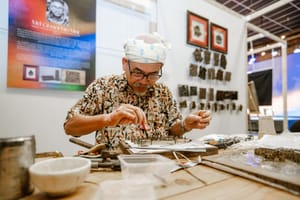I HAVE A strong affinity to textiles—probably because when I was a wee girl, I would often wan - der among rows and rows of rolls of fabric, while my mother, who was a seamstress, slowly picked out the materials she needed to make clothes for her customers. When I started working and began travelling around Southeast Asia, I would make it a point to stop by a textile store to pick up a few metres of fabric to bring home—my most treasured being the Cambodian Silk Ikat (known as chong kiet in Khmer) and the Royal Pahang Silk.
Owning the Profound Art of Batik Making
by
Rachel Yeoh


